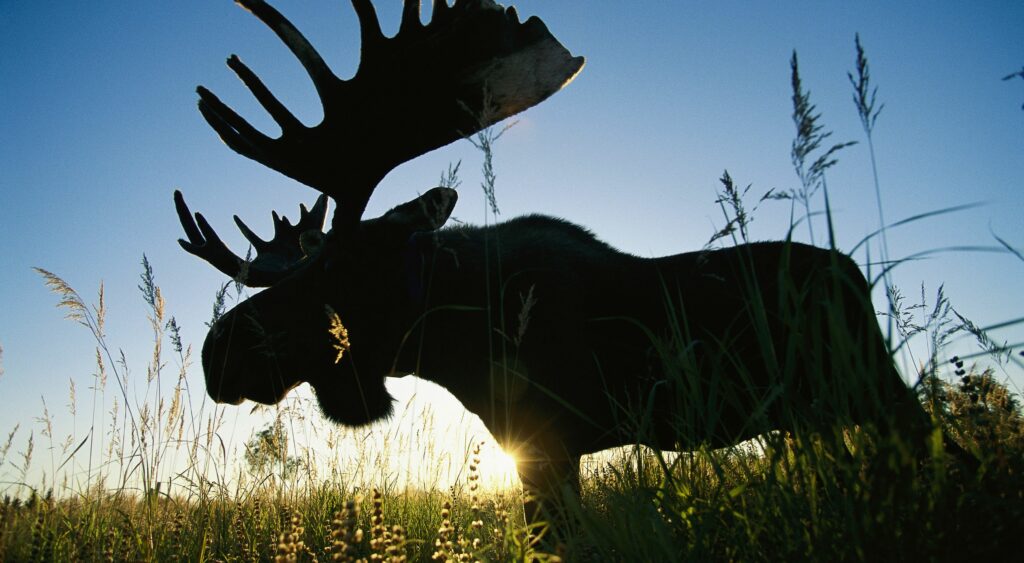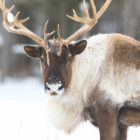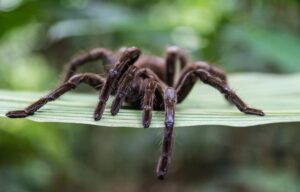Are moose dangerous animals?

Moose, the largest species in the deer family, are revered for their majestic appearance and imposing size. characteristics that can lead to dangerous encounters.
Understanding Moose Behavior
The moose, scientifically known as Alces alces, is an imposing and majestic species of deer that inhabits the northern regions of North America, Europe, and Asia. Renowned for its distinctive appearance and impressive size, the moose is the largest extant member of the deer family, Cervidae.
One of the most striking features of the moose is its enormous antlers, which are present in males and serve both as a formidable display of dominance during the mating season and as tools for self-defense. These antlers can span up to six feet in width and have a unique and intricate shape, making them instantly recognizable.
The moose’s physical appearance is characterized by a humped shoulder region and a long, protruding muzzle. Its fur is dense, typically dark brown, and provides insulation against the harsh cold of its native habitats. In winter, moose may grow a layer of longer, lighter-colored fur to enhance their insulation.
Moose are well-adapted to life in the boreal and subarctic ecosystems, where they thrive in forests, marshes, and tundra regions. Their diet primarily consists of aquatic plants, woody vegetation, and various types of grasses. Despite their large size, moose are surprisingly good swimmers and are known to navigate lakes and rivers with ease.
Moose are herbivores, primarily feeding on aquatic vegetation, plants, and tree bark. Their peaceful nature is evident in their usual demeanor. They tend to avoid confrontations and are typically calm when left undisturbed in their natural habitat.
Threats and Aggressive Behavior
The rutting season, occurring in autumn, can provoke male moose, or bulls, into becoming territorial and exhibiting aggressive tendencies. During this time, they might be more inclined to charge or display aggressive behavior, particularly when defending their territory or competing for mates.
Additionally, cow moose, especially when they have calves, are protective and might demonstrate aggression if they perceive a threat to their young. This maternal instinct is powerful and can make encounters with a cow moose particularly risky, as she might aggressively defend her calves.
Avoiding Dangerous Encounters with Moose
Avoiding encounters with moose and practicing safety measures are crucial for ensuring both human safety and the well-being of these magnificent animals. Understanding their behavior and being mindful of their reactions can significantly minimize the potential dangers associated with interactions.
Distance and Observation
Maintaining a safe distance from moose, especially during sensitive times like calving and mating seasons, is essential. These periods often trigger heightened protective instincts in moose, particularly among cow moose safeguarding their calves or bull moose during the rut. Keeping a minimum distance of at least 50 feet or more from a moose is advisable.
Awareness of Body Language
Recognizing signs of agitation or stress in moose can prevent dangerous encounters. A moose showing signs of aggression might display raised hackles, lay back its ears, stomp its hooves, or make audible vocalizations. Observing and respecting these cues can help in assessing a moose’s state and avoiding potential conflict.
Yielding Space and Non-threatening Behavior
If approached by a moose, it’s crucial to back away slowly and calmly, providing the animal with an escape route. Maintaining a non-threatening posture and avoiding sudden movements can help diffuse potential tension. It’s crucial to remember that moose, even in their seemingly docile nature, can react defensively if they feel cornered or threatened.
Car Safety
On roads or highways, moose collisions can be hazardous due to their large size and the force of impact. Being cautious while driving in moose-populated areas, especially during dawn and dusk when visibility is lower, can prevent accidents. Paying attention to moose crossing signs and reducing driving speed in areas known for moose activity is crucial for preventing collisions.
Real-life Encounters
Real-life encounters between humans and moose have occasionally resulted in confrontations that can be hazardous. While moose are not inherently aggressive, incidents involving these majestic animals have led to injuries, property damage, and, in some cases, fatalities.
Statistics from regions with significant moose populations, such as Alaska, Canada, and parts of northern Europe and Russia, have highlighted the risks associated with moose encounters. These statistics often show a notable number of accidents involving moose on roadways, especially in regions where moose and human activity intersect.
In Alaska, for instance, reports have detailed numerous collisions between vehicles and moose. According to Alaska Department of Transportation statistics, moose-vehicle collisions are not uncommon and can pose significant dangers due to the animal’s large size and the impact of such collisions.
Similarly, in areas of Canada where moose are prevalent, such as regions of Newfoundland and Labrador, encounters between humans and moose, particularly on roads or in close proximity to residential areas, have resulted in accidents and injuries.
Accidents involving moose, especially when they occur on roadways or highways, can be particularly dangerous due to the size and weight of the animal. Collisions with moose can cause severe vehicle damage, injuries, and, in tragic cases, fatalities.
Safety Guidelines
Organizations such as the National Park Service, Alaska Department of Fish and Game, and Canadian Wildlife Federation provide safety guidelines when encountering moose. These resources highlight the importance of understanding and respecting the animal’s behavior for both human and moose safety.
While moose are not inherently aggressive, understanding their behavior and recognizing potential threats is essential to avoid dangerous situations. Respecting their space, particularly during sensitive seasons, and being aware of safety guidelines provided by wildlife management authorities are key to preventing dangerous encounters with these magnificent creatures.










